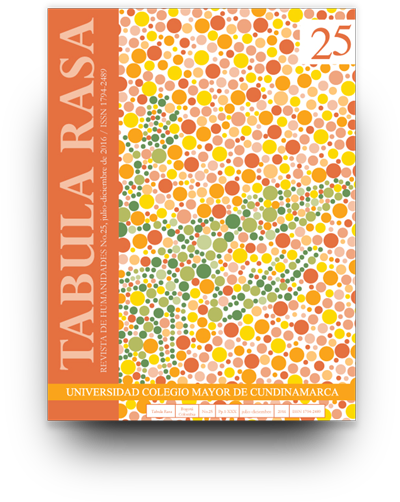Voices on the web : university students and tweets.
Voces en la red : los estudiantes universitarios y el tuit.
Show authors biography
Texts arisen with information and communication technologies determine how university youth interconnect and interact among themselves, who are urgently calling for defining the practices, purposes, roles and modes of organization imposing themselves with each textual type arising from those contexts. Within the framework of Halliday’s Systemic Functional Linguistics, and with the help of Appraisal Theory (Martin, 2000), and particularly the Commitment System (White 2005), and the workings of e-texts’ dialogic ability in tweets are discussed in depth. Making use of concrete examples —the resources most used by youth to exchange academic information—, they explain how reference is made to other authors, how direct and indirect style is used to convey the message and how rumour and the ironic echo appear in the staging on the Web.
Article visits 109 | PDF visits 39
Downloads
- Bajtin, M. (2005). Estética de la creación verbal. Buenos Aires: Siglo xxi.
- Borau, K., Ullrich, C., Feng, J. y Shen, R. (2009). Microblogging for language learning: Using twitter to train communicative and cultural competence. Disponible en: http://link.springer.com/chapter/10.1007/978-3-642-03426-8_10
- Halliday, M.A. (1994). An introduction to Functional Grammar, London: Edward Arnold Publisher.
- Hood, S. y Jim R.M. (2005). Invocación de actitudes: el juego de la gradación de la valoración en el discurso. Revista signos 58 (38): 195-220.
- Huberman, B., Romero, D. y Wu, F. (2009). Social networks that matter: Twitter under the microscope, First Monday, Disponible en: http://firstmonday.org/article/view/2317/2063
- Martin, J. R. (2000). Beyond exchange: Appraisal systems in English. En: Hunston, S. & Thompson, G. (Eds.) Evaluation in text: Authorial stance and the construction of discourse. (pp. 142-175). Oxford: Oxford University Press.
- Muñoz Dagua, C., Asqueta, C. y Casco, M. (2014). Apuntes para una neogramática, Bogotá: UCMC.
- Muñoz Dagua, C. y Andrade, M.C. (2015). Mira quién habla: textos e hipertextos en el contexto de la Red. En: VIII Dies Romanicus Turicensis. Entre estructura y metáfora. 11 a 13 de Junio de 2015. Universidad de Zúrich (Suiza).
- Orihuela, J.L. (2011). Mundo Twitter, Barcelona: Alienta.
- Spaniol, M., Li, Q. Klamma, R. Lau, R.W.H. (eds.). (2009). Advances in Web Based Learning - ICWL 2009. Proceedings of the 8th International Conference on Web-based Learning (ICWL 2009), Heidelberg: Springer.
- White, P. (2004). The Appraisal website: The language of attitude, arguability and interpersonal positioning. Disponible en: http://www.grammatics.com/appraisal/index.html
- White, Peter (2005). An Introductory Course in Appraisal Analysis. http://www.grammatics.com/appraisal/AppraisalGuide/UnFramed/IndexOfUnFramedGuide.html (Mayo, 2014)




